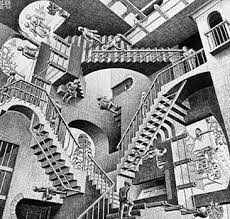deleted by creator
That was a super interesting read - thanks for the writeup!
most PCs by that time had built-in MIDI synthesizers
Built-in? You had AdLib cards for FM synthesis, but they were never built-in and most PCs didn’t even have them. Adlib cards used the Yamaha OPL2 or OPL3 chip.
Along came Creative Labs with their AWE32, a synthesizer card that used wavetable synthesis instead of FM
You are skipping a very important part here: cards that could output digital audio. The early Soundblaster cards were pioneers here (SB 1.0, SB 2.0, SB Pro, SB16). The SB16 for example was waaaaay more popular than the AWE32 ever was, even if it still used OPL3 based FM synth for music. It’s the reason why most soundcards in the 90s were “Soundblaster compatible”.
Digital audio meant that you could have recorded digital sound effects in games. So when you fired the shotgun in Doom to kill demons, it would play actual sound effects of shotgun blasts and demon grunts instead of bleeps or something synthesized and it was awesome. This was the gamechanger that made soundcards popular, not wavetable.
The wavetable cards I feel were more of a sideshow. They were interesting, and a nice upgrade, especially if you composed music. They never really took off though and they soon became obsolete as games switched from MIDI based audio to digital audio, for example Quake 1 already had its music on audio tracks on CD-ROM, making wavetable synthesis irrelevant.
BTW, I also feel like you are selling FM synthesis short. The OPL chips kinda sucked for plain MIDI, especially with the Windows drivers, and they were never good at reproducing instrument sounds but if you knew how to program them and treated the chip as its own instrument rather than a tool to emulate real world instruments, they were capable of producing beautiful electronic music with a very typical sound signature. You should check out some of the adlib trackers, like AdTrack2 for some examples. Many games also had beautiful FM synthesized soundtracks, and I often preferred it over the AWE32 wavetable version (e.g. Doom, Descent, Dune)
Most of Creative’s AWE32 cards do use a real Yamaha OPL3 chip for FM synthesis, which can produce two-or-four operator voices. The latter of those can approach the quality of the voices in their DX7-family line of musical instruments. Even the older OPL2 chip that is limited to two-operator voices can sound great when programmed well (not that I’d call it realistic-sounding).
The other synth chip on the AWE32 is the Ensoniq EMU8000. That one does sample-based synthesis as you describe above.
Just wanted to note that Creative misappropriated the term wavetable synthesis when they marketed this and other sample-based synthesis cards of theirs, and the misnomer spread widely to the products of other companies and persists to this day.
You just unlocked a memory for me. One of my dad’s friends had a super cool keyboard, I think it was a Casio. It had midi, and a bunch of built in instruments. Then he had another friend, who was a huge geek, who figured out how to extract the midi instruments from the keyboard, so we could use them to replace the cheaper sounding midi instruments in windows.
Obviously it didn’t sound as good as the keyboard, because it still was dragged behind by inferior hardware on the PC. Not to mention the fact that some of the instruments just didn’t play, and that Windows liked to crash and revert all instruments back to the default if it didn’t like an instrument we tried to feed it, but I still remember it as something really badass.
At the time (1995-ish) I was developing a series of Windows applications that let people compose music on their PCs, […] the actual quality of the music when played through a shitty built-in FM sound chip was depressingly awful
And the a Atari ST and Amiga 500 was released in the late 1980s.
deleted by creator
Along came Creative Labs with their AWE32, a synthesizer card that used wavetable synthesis instead of FM.
Creative Labs did wavetable synthesis well before the AWE32 — they released the Wave Blaster daughter board for the Sound Blaster 16, two full years before the AWE32 was released.
(FWIW, I’m not familiar with any motherboards that had FM synthesis built-in in the mid 90’s. By this time, computers were getting fast enough to be able to do software-driven wavetable synthesis, so motherboards just came with a DAC).
Where the Sound Blaster really shined was that the early models were effectively three cards in one — an Adlib card, a CMS card, and a DAC/ADC card (with models a year or two later also acting as CD-ROM interface cards). Everyone forgets about CMS because Adlib was more popular at the time, but it was capable of stereo FM synthesis, whereas the Adlib was only ever mono.
(As publisher of The Sound Blaster Digest way back then, I had all of these cards and more. For a few years, Creative sent me virtually everything they made for review. AMA).
Thanks for the anecdote. I love reading this kind of context-giving stories on how different our expectations on consumer-grade electronics were.
I remember having the Extigy, and having problems getting it work properly with basically every single game I owned.
deleted by creator
I still have my PCI 0404 somewhere. I should really work out where, before it gets accidentally binned!
deleted by creator
No plug! It was just a PCI card with breakout cables. (Which I should definitely track down soon!)
Until I upgraded to Linux Mint recently I actually DID use a Soundblaster card (modern one from 2018) to drive my super nice headphones and speakers
Too bad mint weirdly hated it despite recognizing it, but the new speakers have a fine DAC so…
Grandpa said nothing wrong.
The company name was Creative Labs.

I inferred that the “…” meant he was still talking and his granddaughter interrupted him
That’s the hairiest granddaughter I’ve ever seen.
Wow, there’s a template just like this one with a granddaughter and I didn’t even clock this is a different one
Sure grandpa, let’s get you to bed.
I still have a sound card, because I have a stupid sound bar that works great except it only takes optical audio input.
Your mobo doesn’t have optical? I thought that’s pretty standard on everything except basic models.
I think SPDIF is being phased out because it needs to use compression to do surround sound.
compression with surround isn’t really the issue. it’s that the newer dolby/DTS stuff needs more bandwidth. imo, 2.1 is more than enough for 95% of pc users.
That’s disappointing, as one of the advantages of SPDIF is no ground loops between the PC and the receiver/amp. Maybe that’s not really as much of a problem now, but it solved that for me years ago and I’ve used it ever since.
Then again, I don’t have a surround setup, simple stereo is good enough.
Surprisingly, it’s not even on some high-end boards.
https://www.gigabyte.com/Motherboard/X670-AORUS-ELITE-AX-rev-10-12/
wait… the specs say 7.1 audio… but it only has stereo out?
Oh that is hilariously scummy. It’s probably 7.1 through HDMI…
But if that was the case, you’d need a cpu with an gpu (who is going to put a ryzen apu in a topend mobo??)… so really scummy. How the hell is my $140 asrock have proper 7.1 analog and optical but not this pos lol
I looked at the more detailed specs, and here we have:
3 x audio jacks
2/4/5.1/7.1-channel
- You can change the functionality of an audio jack using the audio software. To configure 7.1-channel audio, access the audio software for audio settings.
If using 2-pole aux jacks, those 3 back panel female connectors only provide 6 independent channels. If the case has a front panel connector, you can push that to 8 channels.
The only way you’re squeezing 7.1 analog out of that is if you use the front panel as LR, use two of the three back panel ones as surround, and share center with the sub between the last remaining connector. But, that’s assuming that two of those back connectors aren’t for mic or line in.
Maybe you could squeeze digital output through those jacks, but then you’d need a compatible receiver. Either way, stupid design for such an expensive motherboard.
who is going to put a ryzen apu in a topend mobo??
The Ryzen 9 7950X has integrated graphics, but if someone is willing to dump that much on a processor, they’re probably buying a GPU with it.
Ok… assuming the audio inputs can be changed to outputs… you lose analog inputs which isn’t great either.
I guess I missed where amd has released apus on normal skus on this gen. But still, I don’t like being forced to buy a specific cpu just because the uber expensive mobo cheaped out on adding outputs…
Wait, he didn’t even get to the part where you had to configure it!!
Seriously. And they also didn’t cover the part where the damn driver would randomly get corrupted every now and then
I have fond memories of these simpler times…
IRQ 5?
I thought 7 was the magic number
You’re both right! It started as 7 for the default and changed to 5 because 7 was also the default for the parallel port.
IRQ 5, I/O 220, DMA 01 🤘🏻
I was poor, so mine was typically running the “or SoundBlaster compatible” card.
“Your sound card works perfectly.”
And if you kept pressing it, it would tell you off. Back when even installers had more soul than their games do now.
Sounds poor.
It was the early days of computers, so it’s not like that’s really saying much. Most of it was a mishmash of stuff
Reading those numbers it’s like I can hear the Duke Dukem intro.
Hail to the king, baby!
Or Star Control 2 Hyperspace theme.
I missed out on that one
Ugh…
How did PCs beat out the Amiga, Mac and ST with nonsense like that?
Phoenix BIOS/The BIOS Wars
Open and documented APIs.
They could play Wolfenstein and Doom…
Volume
What you did there, I see it.
They couldn’t play Doom (until much later). Even to this day, the Amiga ports are lackluster. Hardware wasn’t designed for that kind of game.
How did PCs beat out the Amiga, Mac and ST with nonsense like that?
I think you can ultimately blame Compaq. It was the first “pc clone” that showed the market that a PC not from expensive IBM was viable. After that even if you weren’t buying a Compaq your own generic clone was “good enough”. So You could access hardware and software built for a $4000 8088 IBM PC with your $1200 clone.
Amiga never was commodity hardware. It was always expensive. It didn’t get cheap enough fast enough. Amiga 500 came too late.
Because I could play the same copies of the same games on my Tandy 1000, the IBM PCs at school, and my friend’s Packard Bell. Standardized architecture was, and still is, a huge draw.
Most of the time it was IRQ 7 for me.
Yeah, IRQ7 was also pretty common for sound cards as long as you didn’t need to print at the same time. For DOS games, that wasn’t a big deal but if you were running Windows and multitasking with something that played sound (I was an early adopter of MP3s), you couldn’t use both at the same time.
My first Pentium PC was all kinds of awful because it used that IBM Mwave combo sound card /modem. You couldn’t use the modem and play sound at the same time or it would lock the PC up. It was also configured by default to use IRQ7, so if you were online, you couldn’t print either. At least I was able to work around the latter by setting it to IRQ5.
Not the same thing, but I still have my old Voodoo 2 3D-accelerator card (not the same thing as a video card back then).
It’s a good thing you held onto it.

that’s why I sold mine a couple years ago :)
Wow, I have a bunch of old stuff laying about too that I figured was worth nothing. Original boxes, games, manuals etc which might help too. Hmm
Shit, I should check my bins
I had the original voodoo 3Dfx in 50lbs Alienware case with a 75 lbs 20+ inch crt… can’t remember the exact size. Wrong choice for university living at the time
I miss my Voodoo 2 3000 AGP card.
I got an ABIT Siluro/ Geforce 2 MX400 after that and Diablo 2 ran worse, the frame rate tanked. I was gutted.
Back in the day I tried to play Morrowind but every time I moved my mouse the game would crash, I started removing hardware until I found out it was my soundcard giving me issues, was an old ISA slot. Got a PCI soundcard after that and no issues.
Those were the days.
Shitty days, but days nonetheless, when PC gaming was the Dark Souls of gaming.
VESA local bus. It was the shit and nothing was ever going to be better. Until next year.
You had to use Voodoo to see the magic 3d graphics
Not only that but they also had the serial input for joysticks.
So if you played some Wing Commander with a game pad or stick you probably had this card.
15 pin d-sub that could support TWO joysticks if you had the splitter cable. Micro machines 2 : 4 player, with 2 gamepads into the soundcard, and one player using each side of the keyboard.
Miss that era and wish that there were more options for PCI “premium” sound cards. All of the fancy DACs and audio interfaces are seemingly USB.
The inside of the PC is electrically hostile to good sound quality. Loads of electrical noise.
USB is an excellent use of a sound interface.
i had an internal creative soundcard some 5 years back. sound was pretty perfect with dt990 pro and sz2000. my current creative usb soundcard has more noise :(
What if I put foil all around it
You’d have to put it all the way around it, including near the connector. Obviously you can’t put it inside the connector, but that’s another avenue for noise to get in. Outisde the box of noise with it’s own box of insulation is a much calmer place.
I’m still rocking an Audigy 2 on my main computer for that 1/4" jack on the front bay
Great card, got one in my 440BX retro rig! Plus an AWE64 Gold and a PnP SB16 with a real OPL3 FM chip. That’s just a bit of what’s kicking around here…
But you got the connector for a Joystick for free!
Ah, i remember might & magic 3. loved it, because it sent speech through the crappy pc speaker. So cool
Got a second hand ISA interface SoundBlaster 64 at a computer fair in San Diego when I was visiting there for the best summer of my life in 1998. If I remember correctly it was $4.
Money well spent.
At the Scottish Rite Center in Mission Valley? There’s a good chance I was also there that year. My two most prized possessions I acquired there were a 3dfx Voodoo Rush, and a modded PlayStation 1 in a clear plastic housing.
Not there but (and I had to google maps this) it was at a place that I think is called “Pechanga Arena” now on the aptly named “Sports Arena Blvd” but I think the arena was called something else back then. About 2 miles from Ocean / Mission beaches and close to my apartment at the time.
You did well with your purchases!
Flippin’ LOVE San Diego.
Ah yeah, Pechanga Arena was just “The Sports Arena” in the era before sponsoring venues was a thing. They still to a swap meet in the parking lot of that place every weekend. Random other info about that place, they shot a scene from Almost Famous at one of the freight entrances there.
Pechanga Arena was just “The Sports Arena”
That’s what I thought! But it just seemed like my memory playing tricks on me for a place to be called “The Sports Arena”. LOL.
Random other info about that place, they shot a scene from Almost Famous at one of the freight entrances there.
WHAAAT!?!?! Love that movie and I only rewatched it there a few months ago not knowing that. That’s a cool little nugget. Thanks!




















